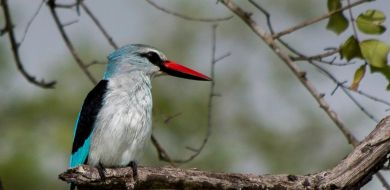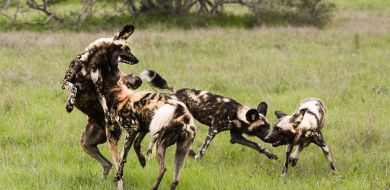Sabi Sabi Wild Facts: White Crested Helmet-Shrike
on Dec 16, 2014White-crested Helmet-shrikes are common residents on the reserve and are often seen moving around and hunting in family groups. Their most common food sources are moths and caterpillars but they will eat other invertebrates given the chance. During the summer months they feed mainly in the trees, dropping to the ground to feed in the winter.

White-crested Helmet-shrikes are cooperative breeders, meaning that they have an Alpha pair in the group that bonds for life. This bond is maintained by the pair "allopreening" (grooming one another). The Alpha pair has the responsibility of selecting their nesting site, but all members of their flock do the actual construction of the nest. Bits of bark are stripped off trees and bound together by spider webs. The design of the bird now comes into play with a tuft of feathers on the forehead above the beak, (hence the name Helmet-shrike) enabling it to fly through and pick up spider webs for the purpose of construction.

The Alpha female will lay between two and five eggs which are incubated in turns by all the group members. When it comes time to swap birds that are incubating the eggs, the entire flock will fly to the nesting site pretending to feed and swiftly swap the individuals which will be sitting on top of the eggs. This is merely a form of distraction and once the new bird has settled on top of the eggs the flock will move off feeding once again. Incubation can take anywhere between 16 and 21 days. Once the eggs hatch the group moves off to feed, leaving one bird to guard the nest whilst another one broods the chicks. When the chicks reach 17 to 22 days old they leave the nest and will be fully independent by five months.






